HP Pavilion tx2050ea Review
HP Pavilion tx2050ea
HP returns with a refinement of its Entertainment Tablet PC concept, can it convince second time around?
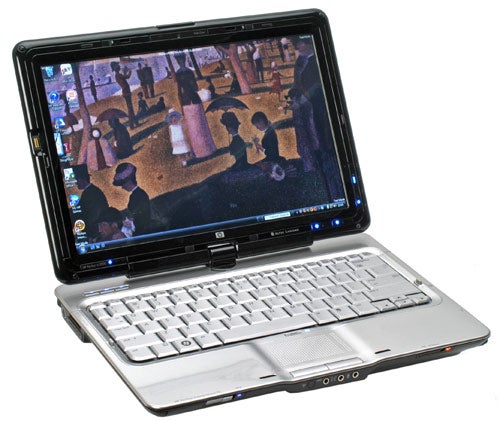
Verdict
Key Specifications
- Review Price: £639.99
You’ve got to hand it to HP. While the consensus seems to be that Tablet PCs are the ultimate niche within a niche, it has spent a fair amount of time and money trying to sell the idea to the mass market. Its first attempt was the tx1000, which was a tidy effort that showed promise but needed some refinement, and HP has gone away and come up with a hopefully improved version, the Pavilion tx2000.
We’ve actually got our hands on an engineering sample of the machine, which features an AMD Turion X2 TL-66 running at 2.3GHz and a 5400rpm 160GB SATA HDD. However, the only model currently on the market is the Pavilion tx2050ea, which is identical to our sample apart from the fact that you get a slower AMD Turion X2 TL-60 that runs at 2.0GHz with 1MB L2 Cache and a 250GB HDD. Otherwise the systems are identical, with each packing in an impressive array of features for a small 12.1in notebook such as this.
As is typical you get 2GB of 667MHz DRR2 RAM, which is no more or less than you need when running 32-bit Vista Home Premium, as this system does. An nVidia GeForce Go 6150 means this is no graphics powerhouse, but this is a portable notebook and we wouldn’t expect much more. You do get a LightScribe capable DVD+/-RW optical drive, though, so you can watch DVDs, burn DVDs and burn labels onto them as well.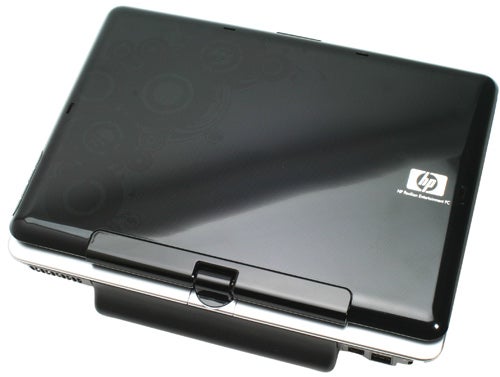
Network connectivity is also a strong point, with Draft-N wireless, Gigabit Ethernet and Bluetooth 2.0+ EDR all included. This means you should have no problem streaming high definition video to or from the machine, which given the ample storage provided is definitely a possibility. Indeed, there’s little the tx2050ea lacks. You also get a 0.3 Megapixel WebCam with integrated stereo microphones, a fingerprint reader, a mini remote and both six-cell and eight-cell batteries in the box.
At around £640 this little HP represents astounding value for money and, given this price, one could just as easily consider it a standard 12.1in notebook that just happens to have a convertible and touch sensitive screen, since you aren’t actually paying much of a premium for it. 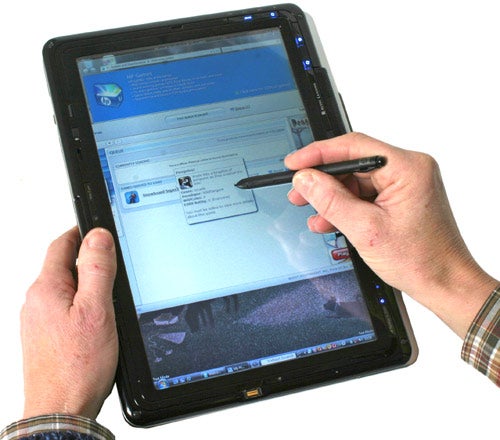
Much of this value is generated by using the mobile AMD platform, which is noticeably cheaper but is weaker in terms of both raw performance and battery life compared to Intel’s current offerings. Issues concerning battery life are offset somewhat by the inclusion of both the standard and extended battery, but this does mean that with an extended eight-cell battery the machine weighs a hefty 2.33kg, not inconsiderable for a notebook this size. Things improve with the six-cell, though, with the overall weight slipping below 2kg to 1.92kg.
As we’ve become accustomed to with HP machines, the tx2050ea is a very well designed and constructed notebook. HP has brought this model into line with the rest of its Pavilion line, with a glossy black lid and bezel and an attractive imprint design that continues on the interior. It’s full of nice touches, such as a button for turning off the touch pad and playback/shortcut buttons on the bezel that can be easily accessed whatever position the screen is in. 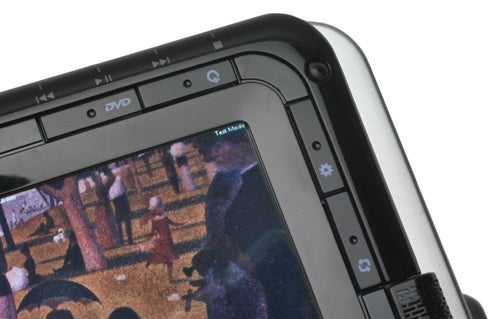
You also have the mini remote that fits into the 34mm ExpressCard slot, while there are infrared receivers on both the front edge and on the bezel, so you can use the remote in both normal and tablet positions. A fingerprint reader to the side of the screen is another nice touch, though it can be a bit awkward to use depending on what finger or thumb you employ – please do remember to log more than one!
Nowhere, however, is the quality of the construction more apparent than in the screen hinge. It’s beautifully designed, holding the screen firmly in place but making it easy to adjust and switch positions within seconds. It’s definitely the best mechanism we’ve seen, which is important given consumers will have less patience for fiddly lock mechanisms than a hardened Tablet PC user. But, why would you want a convertible screen in the first place?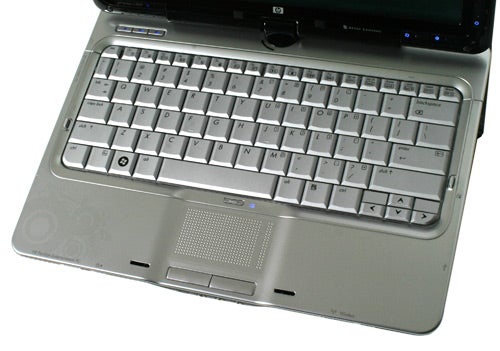
In fact, HP’s reasoning in this respect seems fairly solid. Flexibility, especially in portable notebooks, is a useful commodity and this machine has it in spades. It’s particularly useful in confined spaces such as trains and planes, where on a normal notebook it might be difficult to get a comfortable viewing angle for the screen.
It also enables you to view documents and web pages in portrait mode and obviously write notes using the provided pen. And, though that isn’t something a lot of people will find useful, handwriting recognition is surprisingly good and an active digitiser means you can hover over the screen with the pen and rest your wrist down while writing. It’s just a shame that using your finger is still such a hit and miss affair, which means you’ll want to use the provided pen in most instances.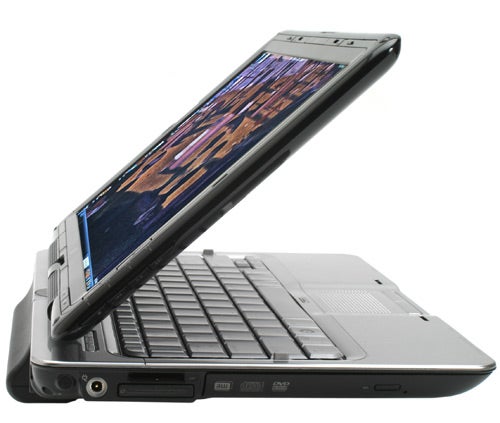
Another disappointment is the screen. This is always a problem on Tablet PCs, where the protective layer reduces brightness and colour fidelity. As a result colours and black levels are really quite poor, as are viewing angles. There’s also a glossy finish and this combined with comparatively low brightness can cause a real problem in bright environments. This is likely to be the biggest issue users will encounter, since any kind of sunlight on the screen can make using the tx2050ea very difficult indeed.
Both the brightness and vibrancy, or lack thereof, obviously have an effect on general image quality, too. Video is watchable but lacks any real detail or subtlety, while pictures are similarly dull and uninspiring. It must be added, though, that the integrated speakers are remarkably decent for their size, though a pair headphones or speakers will always be preferable.
Indeed, despite the weaknesses of the screen, using the tx2050ea is still a positive experience. Even if you don’t use the Tablet PC functionality to its full, it’s a nice notebook to use, with a decent keyboard and a great textured touch pad that’s sunken slightly into the chassis. 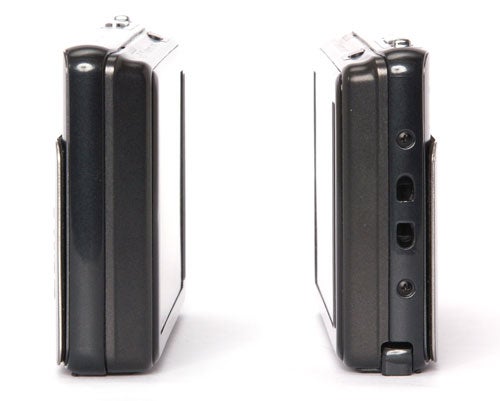
In addition, it can’t be stressed enough how great being able to switch the screen around for watching video is in confined spaces. Where once you might have had to carry a Portable Media Player, the tx2050ea can fill in, adaptable enough to be used in even the most cramped Economy class compartment.
Connectivity is, for the large part, pretty solid. On the left edge you’ll find the 34mm ExpressCard slot, 5-in-1 memory card reader and DC-in, with the rest of the space taken up by the optical drive. Meanwhile, on the front, there’s a sliding on/off switch, infrared receiver, dual headphone outputs and microphone input, along with a wireless on/off switch, too.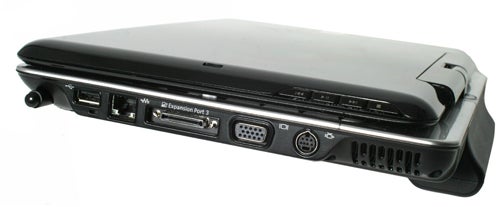
Moving to the right edge you’ll find USB, Ethernet, docking, D-Sub and S-Video connections, with a further two USB ports on the back joined by the Modem port. If one thing is missing it’s an HDMI port and though this might appear nitpicky, any notebook with pretensions to “entertainment” ought to have one. This is clearly a limitation of the graphics solution used, but it’s a shame nonetheless.
One other area of contention that needs to be dealt with is performance. Now, you’ll have noticed we don’t cover many AMD powered notebooks, the last was another small and cheap notebook, the MSI PR210, and that’s because manufacturers aren’t keen for us to review them since the AMD mobile platform doesn’t match up well against Intel. So, despite this system having a 2.3GHz CPU, it still trails an Intel equivalent running at only 2.0GHz. Moreover, since our system actually has a faster CPU than that which will ship with customer units, this difference is going to be more marked.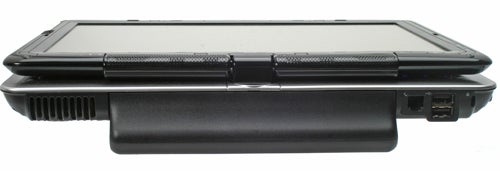
It’s in the CPU intensive in-house Photoshop Elements and Virtual Dub tests where the disparity is clearest, with results that are far inferior to both of our test systems, both of which sported 2.0GHz Intel CPUs. This shouldn’t perturb the average user greatly since it’s still more than adequate for normal usage, but those with more demanding requirements should stick with an Intel based machine.
In addition, the AMD platform suffers when it comes to battery life. We only have the eight-cell battery so couldn’t test with the six-cell, but we found we got around four and half hours when using the Balanced profile. This sounds fine in isolation, but with Intel machines you’d be looking at over five hours, perhaps even towards six under the same conditions. Again, battery life is still acceptable given the price and features you’re getting, but it’s worth considering if battery life is a primary concern for you.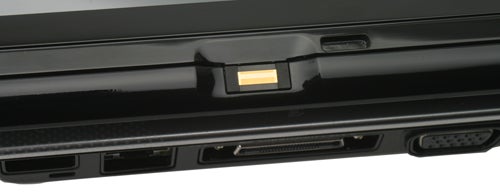
But does this, along with the other issues, tarnish the Pavilion tx2050ea’s other more attractive elements? Without doubt, there are enough issues to provide some serious thought and if you would prefer a higher quality screen over Tablet PC functionality then you’re better off looking elsewhere – perhaps the Samsung Q45, Dell XPS M1330 or Toshiba Satellite U300 would suit.
Yet, there are still enough positive aspects to the tx2050ea to make it an attractive proposition. For watching films in confined spaces few notebooks can match it, while it’s as attractive and well put together as any we’ve seen, especially at this price point. Throw in Draft-N wireless and a host of other neat features and its still a great option, even if it’s a little slower and less frugal than more expensive machines.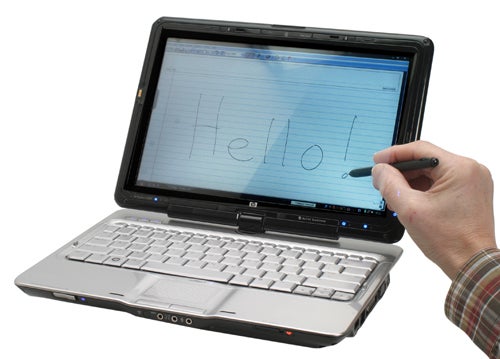
Verdict
Despite a disappointing screen and some performance issues, the Pavilion tx2050ea is a solid and very affordable Tablet PC targeted at regular consumers rather than business users. Perfect for working and playing in confined spaces, its convertible screen makes it uniquely flexible, while its design makes it both attractive and easy to use. It won’t be for everyone, but those who fall for its charms will appreciate them all the more.
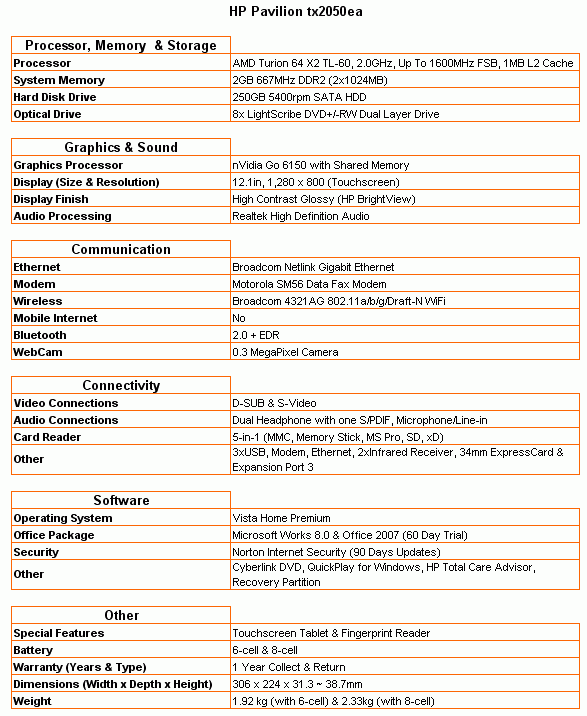
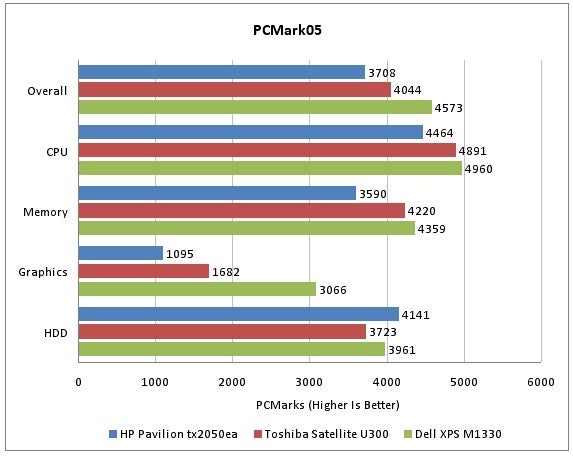
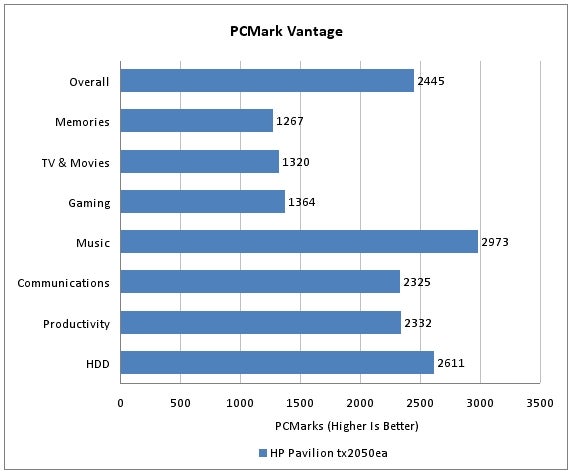
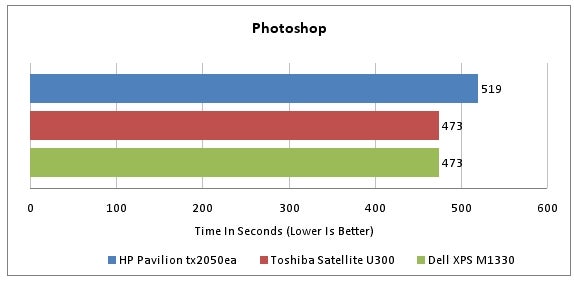
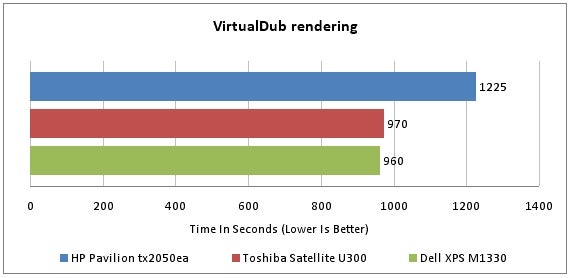
How we test laptops
Unlike other sites, we test every laptop we review thoroughly over an extended period of time. We use industry standard tests to compare features properly. We’ll always tell you what we find. We never, ever, accept money to review a product.
Trusted Score
Score in detail
-
Performance 6
-
Design 8
-
Value 9
-
Features 8

